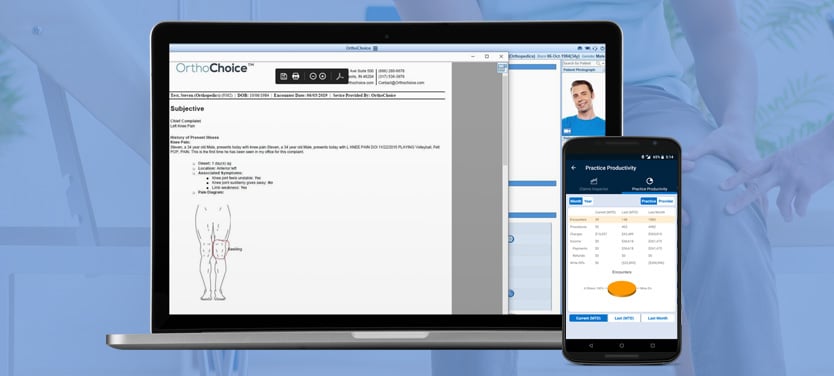
7 Features Your Orthopaedic EHR Should Have
Not every Orthopaedic EHR is the same. Ortho providers need a specialty-specific Electr...
January 29, 2020
An Orthopaedic practice is composed of many unique moving parts that characterize it separately from any other specialty. Through a multitude of imaging, an array of patient data, and a long list of diagnoses that require immense attention to detail and focus on behalf of your staff, Ortho providers need an Orthopaedic practice management software that empowers them to do their jobs well. Without and Orthopaedic practice management software, ortho specialists will encounter greater inefficiencies in their workflow and find themselves without the resources they need to reach the highest standard of care.
4 Unique Features of an Orthopaedic Practice Management Software
1) Robust eDocument Management for Digital Imaging
Ortho practices frequently management a multitude of diagnostic images, causing them to need a convenient way to upload, file, and view them. A top of the line Orthopaedic practice management software is equipped with a robust eDocument management system for digital and diagnostic images. With this feature, providers can upload these images directly into the patient’s chart. Whether they are images from an X-ray, MRI, or an image taken by the patient or provider, these images are stored into a rich file management system with folders and subfolders that are custom to their practice. Quick access to these images allows providers to easily reference imaging during clinical decision making and stay completely informed for every patient encounter.
2) Custom Workflow
An eDocument management system is not the only customizable feature found in an Orthopaedic practice management software from a trusted vendor. Your PM solution should also allow for an entirely customized workflow, optimizing workflow efficiency, time management, and the clinical process. Whether a provider is documenting for an ACL, a trauma injury, a Total Joint Replacement or any other Orthopaedic condition, each template is customizable to the needs of your practice.
3) E-Prescriptions
Orthopaedic providers probably utilize several prescriptions that are also used across other specialties, but what is more important is the set of medications that Ortho specialists use most often. For this reason, it is important that your Orthopaedic practice management software be fit with a list of the most used prescriptions in your specialty. This way, providers can choose from a prepopulated list of FDA approved drugs and over the counter treatments used by Ortho specialists across the country for the particular diagnoses. Prescription price transparency in your Orthopaedic practice management enables providers to then determine which prescription works best for their patients. This e-prescription process enables simpler and more informed clinical decision making and prescribing processes.
4) Improved Patient Engagement
An Orthopaedic practice management solution from a trusted vendor also enables your practice to better engage its patients and promote higher levels of patient involvement. With an integrated solution, patients can access their personal health data on their own. Here they can view and understand test results, review their provider’s notes regarding diagnostic imaging, and reexamine their treatment plan. Orthopaedic practice management software integration also enables patients to better communicate with their physicians and reach out to them should question or red flags arise. Providers should take any chance they can to increase patient engagement at their specialty as it leads to improved outcomes, and increase in patient payments, and an increase in compliant follow-up care
With the right vendor, an Orthopaedic practice management solution can equip your practice with the tools to increase workflow efficiency, improve clinical decision making, implement simpler day-to-day processes, and empower patients to get involved in their care. If your practice is searching for an Orthopaedic practice management software, but you do not know where to start, click here.